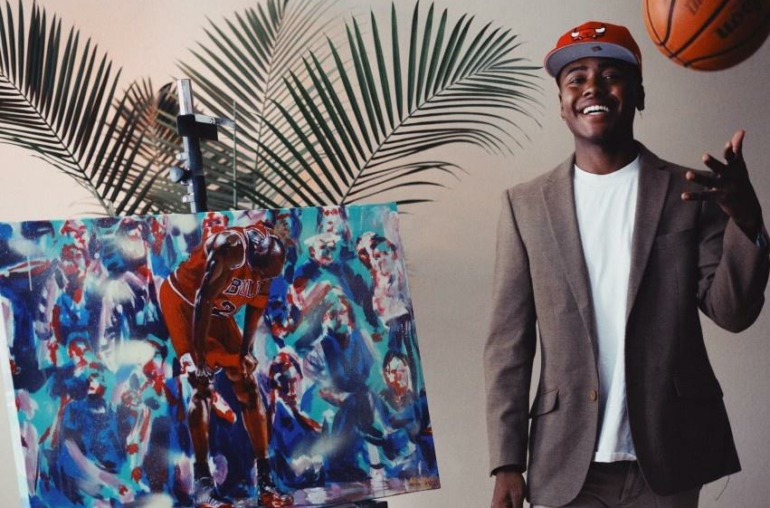Jack Dorsey’s first tweet sold for $2.9m in 2021 then could not get past $14,000 at auction last month. But some projects have thrived
It was described as the Mona Lisa of the digital world and it came with a connoisseur’s price tag: $2.9m (£2.4m) for the first tweet by Twitter’s co-founder. This was March 2021 and non-fungible tokens, or NFTs, were bursting into the mainstream.
One year on, an attempt to sell on Jack Dorsey’s Twitter debut for $25m was pulled after auction bids topped out at just $14,000 (£11,350). Explosive growth of NFTs over the past 12 months has levelled off, and may even be in decline, according to analysis of the sector, as attention consolidates around a few of the largest players.
The NFT rush in 2021 saw sale after sale of the novel digital assets hit staggering sums. A collection of images by the visual artist Beeple sold for $69m, the main token for the “play to earn” video game Axie Infinity hit a total value of $9.75bn and Coca-Cola raised more than $575,000 from selling items such as a customised jacket to be worn in the metaverse. The football industry, with former Chelsea star John Terry to the fore, has not been slow to back the craze either.
The Dorsey NFT was put up for auction in April by its owner, the cryptocurrency entrepreneur Sina Estavi, who said: “This NFT is not just a tweet, this is the Mona Lisa of the digital world.” Estavi hoped to raise more than $25m from the sale and offered to donate half his takings to charity. When bids reached just $14,000, he pulled the auction entirely.
Non-fungible tokens are so-called because, unlike similar technologies such as bitcoin and ethereum, each is in some way unique. That means that they can be applied to more than just simple currency-style uses, and in the past few years NFTs have been adopted by people seeking to turn art, music, games and trading cards into digital assets.
NFTs use a blockchain – the decentralised ledger first used by bitcoin to track ownership of the cryptocurrency – to record who owns them and allow them to be traded or modified. But most are based on the ethereum blockchain, which is maintained through an extremely carbon-intensive system called proof of work.
A report published this week by Chainalysis, a blockchain data firm, said collectors have spent $37bn this year up to 1 May, putting them on track to beat the $40bn spent in 2021. However, it said that the “explosive” growth of the NFT market last year had “levelled off”, with a sharp dip in transactions since February. In other words, the monthly spend on NFTs is no longer rising in leaps and bounds, when it started to take off in the middle of last year.
Chainalysis said transaction growth had come in “fits and starts” since last summer except for two big spikes: the release of Yuga Labs’ Mutant Ape Yacht Club collection in August 2021; and a surge in late January this year, likely to have been driven by the LooksRare NFT marketplace.
Other beneficiaries of the boom have seen their value collapse during the past few months. Axie Infinity, for instance, was the flagship example of the “play to earn” sector in gaming. Players could spend thousands of dollars on a Pokémon-style virtual pet, and then play games to win tokens that could be traded for real cash.
At its peak, the game redistributed enough money to in effect pay the wages of thousands of players in the Philippines, but as new players dried up, the value of its token – and the rewards – crashed, bringing the market cap of the organisation from $10bn in November to less than $2bn now. A $500m hack in March, attributed to North Korean state-sponsored attackers, has not helped.
But some NFT projects have thrived. The most prominent, such as Yuga Labs’ Bored Ape Social Club or Proof Collective’s Moonbirds, serve as signifiers of membership to an exclusive club of holders, and as the industry has consolidated around a few large players, interest in their releases has skyrocketed.
When Yuga Labs released its most recent NFT, a set of 55,000 “otherdeeds” representing ownership of virtual land in a forthcoming videogame, the rush to buy the £5,000 tokens was so high that the ethereum blockchain was overwhelmed. Transaction fees shot up to more than £2,500 a trade, affecting not only those trying (and in some cases failing) to buy the otherdeeds, but also anyone else trying to use the ethereum blockchain at the same time. One unrelated trade saw a $25 NFT sold in a transaction that cost more than $3,000 to execute.
Ethan McMahon, economist at Chainalysis said: “The ‘blue chip’ names like Bored Ape Yacht Club have more price stability than new entrants that may get hot and then fizzle out. I would only caveat this by saying that this isn’t new in this space: to date, a select group of popular collections have been the ones to receive the vast majority of activity and, generally speaking, most collections never take off.”
The decentralised nature of the NFT market means there are even disputes about the nature of the crash at all. While specific NFTs have lost millions of dollars of value, the health of the industry as a whole depends on who you ask.
Tom Schmidt, a cryptocurrency investor, cited data from OpenSea, an NFT marketplace, to argue that monthly sales were only slightly down from a peak in January, while a report from cryptocurrency analysts Kraken suggests that the daily transaction volume on Opensea peaked in September and has halved in the months since. Despite the digital Mona Lisa losing its lustre, NFTs remain a multibillion dollar market.



